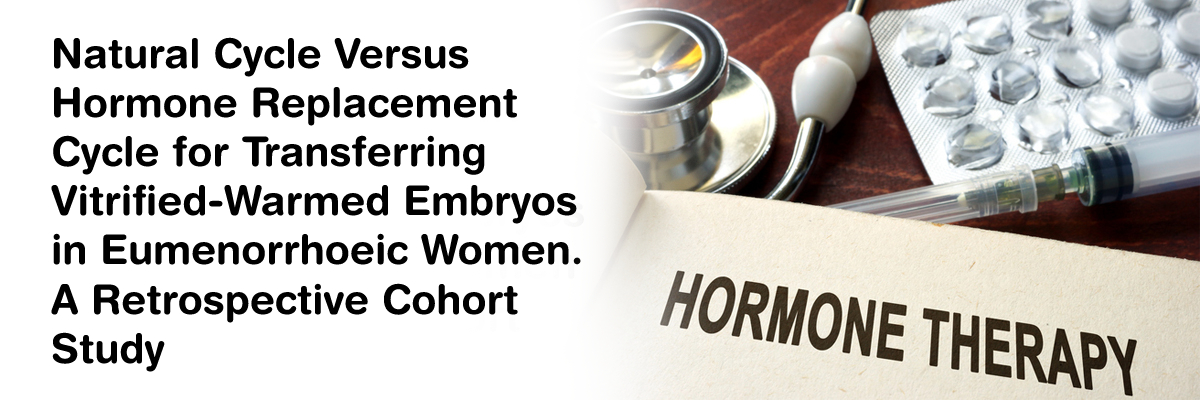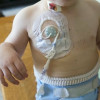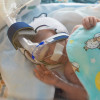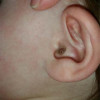
 IJCP Editorial Team
IJCP Editorial Team
Natural cycle versus hormone replacement cycle for transferring vitrified-warmed embryos in eumenorrhoeic women. A retrospective cohort study
A recent study compared pregnancy, miscarriage, and live birth rates and cycle monitoring parameters between Natural Cycle (NC-FET) and Hormone replacement cycle (HRC-FET) in eumenorrhoeic women experiencing vitrified-warmed autologous embryo transfer.
The study analyzed 173 NC-FET and 507 HRC-FET cycles with the transfer of day2/3/5/6 embryos. The investigators performed Natural cycle monitoring using serial ultrasound with the first day of the scan determined by the shortest cycle frequency. They ordered serum progesterone when ultrasound was ambiguous in ascertaining ovulation. Further, the investigators utilized oral estradiol valerate for HRC-FET in fixed or escalating doses with a maximum daily dose of 12 mg. They added Transdermal estradiol gel when the patients did not achieve the desired endometrial thickness. Vaginal progesterone was given with Endometrial thickness(ET)> = 7 mm.
The investigators transferred the Embryos after stage-appropriate progesterone exposure. They gave Luteal support with vaginal progesterone in NC-FET and vaginal and oral progesterone in HRC-FET. The primary outcome was live-birth-rate, and the secondary outcomes were ET, length-of-estrogenic phase, numbers-of-ultrasounds & hormone monitoring, and pregnancy & miscarriage rate.
The researchers adjusted the odds ratio for live birth for age, embryo number, previous-live-births, previous losses, past-negative-ET-cycles, IVF indication, and embryo developmental stage; and statistically analyzed the variables.
- The investigators found the two cohorts to be comparable in age, infertility duration, previous-live-births, previous losses, past-negative-ET-cycles, IVF indication, and embryo-developmental-stage.
- Length-of-estrogenic-phase, as well as mean ultrasound-monitoring scans, were significantly shorter for NC-FET than HRC-FET.
- Mean-endometrial-thickness and mean-hormonal-tests did not differ significantly between NC-FET and HRC-FET.
- Significantly higher live birth occurred in NC-FET vs. HRC-FET.
- No significant difference occurred between the groups relating to pregnancy or pregnancy loss rates.
- The odds ratio for live births after adjusting for relevant variables was 1.48 in NC-FET compared to HRC-FET.
Thus, NC-FET is a superior endometrial preparation method to HRC-FET in eumenorrhoeic women, offering shorter estrogenic phases, reducing hospital visits, and improving live birth rates. Studies concerning antenatal and perinatal outcomes, patient satisfaction rates, and cost-effectiveness in the two endometrial preparation regimes are warranted.
Satwik R, Majumdar A, Gupta SM. Natural cycle versus hormone replacement cycle for transferring vitrified-warmed embryos in eumenorrhoeic women. A retrospective cohort study. European Journal of Obstetrics and Gynecology and Reproductive medicine. 2021;263:94-99. DOI:https://doi.org/10.1016/j.ejogrb.2021.06.005

IJCP Editorial Team
Comprising seasoned professionals and experts from the medical field, the IJCP editorial team is dedicated to delivering timely and accurate content and thriving to provide attention-grabbing information for the readers. What sets them apart are their diverse expertise, spanning academia, research, and clinical practice, and their dedication to upholding the highest standards of quality and integrity. With a wealth of experience and a commitment to excellence, the IJCP editorial team strives to provide valuable perspectives, the latest trends, and in-depth analyses across various medical domains, all in a way that keeps you interested and engaged.





















Please login to comment on this article